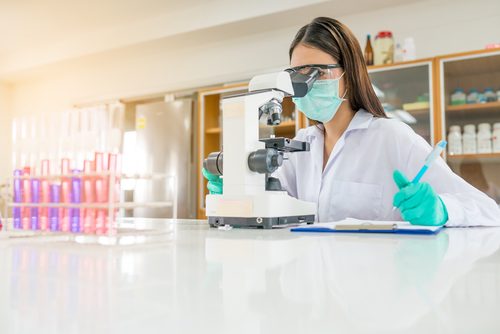MuscleMap Automated Dystrophin Analysis Tool Can Help in DMD Assessment, Study Suggests

Flagship Biosciences has developed an automated method to analyze muscle fibers (myofibers) and quantify key disease-related biomarkers, such as dystrophin, for Duchenne muscular dystrophy (DMD).
The algorithm, known as MuscleMap, was designed to screen muscle tissue samples and detect fluorescent dyes that tag with increased precision the protein dystrophin — absent in DMD patients — within cells’ membranes.
With this approach, it is possible to quantify the amount of functional dystrophin with much less impact on off-target, or unspecific, signals. It is a computer-based analysis, so results are protected from potential interference of researchers’ reading bias.
“Flagship is proud to partner with pharmaceutical and biotech companies in the development of digital image analysis solutions, like MuscleMap, that support the treatment of challenging medical conditions such as DMD,” Trevor Johnson, CEO of Flagship Biosciences, said in a press release.
In a study published in Archives of Pathology & Laboratory Medicine, researchers demonstrated the diagnostic potential of the imaging-analysis algorithm compared to standard methods. The study is titled “Validation of a Muscle-Specific Tissue Image-Analysis Tool for Quantitative Assessment of Dystrophin Staining in Frozen Muscle Biopsies.”
“[This study] will support more effective clinical trials for examining myofibers’ dystrophin expression by driving a greater level of consistency and detail,” Johnson said.
To test MuscleMap’s potential, researchers examined muscle tissue biopsies from 12 DMD and five Becker muscular dystrophy (BMD) patients, and from seven healthy controls. The samples were initially obtained for routine diagnostic testing at the University of Iowa, and later stored at the Tissue and Cell Culture Repository of the University of Iowa’s Wellstone Muscular Dystrophy Cooperative Research Center.
The automated method slightly undercounted the total number of myofibers in the samples compared to data obtained for the same samples but manually analyzed by pathologists. Still, MuscleMap was able to provide similar data on discriminating positive fibers for dystrophin.
These small differences could be due to the more restrictive analysis rules of the automated method, which only counts full-sized fibers, whereas the manual method counts all fibers even if they are “partially cut off by the field of view,” researchers wrote. Still, this difference was within the acceptable variability between diagnostic methods.
Next, the team compared the levels of dystrophin among the sample groups as determined by MuscleMap.
MuscleMap showed that control and some BMD samples had similar fluorescent intensity, while other BMD samples were more similar in fluorescent intensity to DMD samples. This finding “is representative of the variability of dystrophin levels among patients with BMD,” researchers said.
Still, the new method was able to effectively differentiate DMD samples based on the existing knowledge of reduced dystrophin levels.
“MuscleMap enables analysis of all fibers within an entire muscle biopsy section and provides data on a fiber-by-fiber basis,” the authors wrote.
“This approach provides a validated mechanism for assessing treatment effects on a molecular and cellular level” and improves “the clinical trial process for DMD drug candidates that aim at increasing dystrophin expression.”






